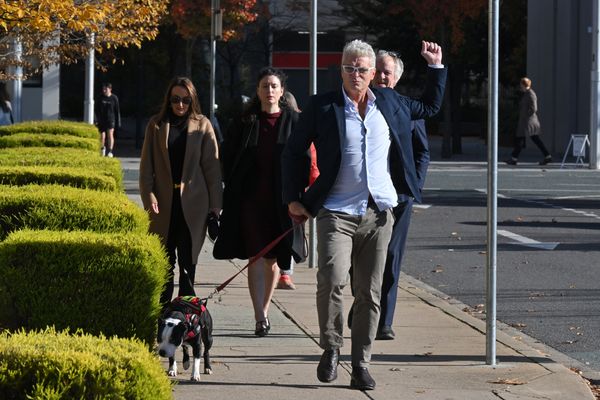
Trending
The relatively muted response to the World Health Organization’s declaration that the COVID-19 pandemic was over didn’t come as a big surprise to me. Anyone who works in digital media will tell you that most audiences are no longer interested in hearing anything about COVID-19, even as it continues to spread through our communities. (Despite that, I trust you’ll read the rest of this excellent edition of WebCam.)
But it’s not time to consign the pandemic to the memory books just yet. Now, with a bit of space, we can really start to understand the full impact of a once-in-a-hundred-years event and evaluate how we responded.
For example, a global pandemic was a new challenge for our relatively nascent social media information infrastructure. Suddenly, billions of social media users weren’t just using platforms to connect with friends or watch clips of popular movies split with Subway Surfer footage. Not to be dramatic, but getting out public health messages on social media was literally life or death.
So, how did we go? A new piece of research that came out of Sydney University’s Health Literacy Lab has begun to answer this. The paper’s authors looked at how Australian state and territory health departments used Facebook, Instagram and TikTok to reach young Australians during the Delta outbreak in 2021. They evaluated everything from the platform used, whether a social media post included images or video, and even breaking down whether they used so-called “social media techniques” like humour, memes or featuring celebrities and influencers. Using engagement as a rough proxy for interest and reach, they measured what kinds of posts popped off and what flopped.
While pointing out health authorities did typically use best practice pandemic communications techniques and leveraged more engagement-driving social media techniques than pre-pandemic public health messages, lead author Melody Taba said the study found they could do more.
“Health authorities had such a captive audience of young people on social media and they didn’t utilise it to the most of their ability,” she told me.
They found that content featuring things like humour, use of emojis and short length all led to more engagement. The best-performing type of content was when health authorities corrected misinformation, perhaps because it tapped into the conflict-driven nature of social media engagement.
None of these findings will be surprising (think about how long various people have spent trying to game algorithms), but they are important to confirm, especially when considering that we will almost certainly have to draw on this knowledge at some point in the future, Taba reminded me. Leaning into what we know works will help get important information out in a crisis.
“Eventually in the next health emergency — and there will always be future health emergencies — we’ll be ready to go,” she said.
I don’t like the sound of another pandemic, but hey, at least we know that the content will be better next time.
Hyperlinks
The extremists in your newsfeed
We published a series of investigations that revealed how online extremists were secretly writing in Australian mainstream publications, using them to launder their fringe ideas. This involved doing some fun internet detective work, which I bet you will enjoy. (Crikey)
Facebook blocks Rockhampton mob leader as Queensland MP prepares to meet with him
Guardian Australia’s Ben Smee and Eden Gillespie have been doing excellent coverage of another social media-fuelled vigilante moment in Queensland, the second in as many months. (Guardian Australia)
Weight loss drugs are sweeping Australia. At some online stores, they’re alarmingly easy to get
Great example of doing the work: The Sydney Morning Herald’s Nick Bonyhady and Natassia Chrysanthos wanted to know how easy it was to be prescribed weight loss drugs online, so they tried. (The Sydney Morning Herald)
Tech industry gives internet rules one last go before commissioner takes over
I’ve been saying this for a while but keep an eye on this. I think we could be heading to a stoush between Big Tech and the eSafety Commissioner. (Gizmodo)
‘Kochie lived a full and meaningful life’: fake celeb death ads use hacked accounts to promote crypto scam
This turned into a rather interesting peek into the underground economy of online affiliate marketing. (Crikey)
Content Corner
Renting in Australia sucks. A housing affordability crisis combined with low rental stock and relatively weak tenant protections is not a very fun combination. Even those people who secure a place find themselves teetering on precarity at the whims of landlords who know the line of potential replacement tenants would go around the block.
Naturally, content about the sorry state of renting in Australia is incredibly popular on TikTok. Searching “renting” along with the name of the city shows an endless carousel of horror stories of exorbitant rent hikes, near-derelict properties, rude real estate agents and absent landlords just about everywhere in Australia. Oh, and lots of mould. Videos and comment sections are filled with people expressing rage, horror and resignation. The vibes are rancid, you might say.

Beyond this rentalporn, there’s an interesting trend of renters who are vlogging their way through their unfortunate experiences on TikTok. They chronicle every up and down, seek advice from their audiences and then share what they learned back.
The queen of this genre in Australia is Chantelle Schmidt, a content creator (and, full disclosure, a former colleague) who was confronted with a $350-a-week rent increase by her landlord in February. Since then, she’s fastidiously made videos about her back-and-forths with the real estate agent, the home’s owner and, now, the tribunal process that have been viewed millions of times.

Schmidt told me TikTok was the perfect place for this kind of content: “I think that the other social media platforms were appropriate. Instagram’s more for my personal life. LinkedIn is work. Facebook is dead. I knew that TikTok could go further and wider, that’s why I put up the initial video, I wanted advice, I wanted to know what to do,” she said.
What makes this type of video so interesting, I think, is how they become a tool for inverting the power imbalance felt by tenants. Instead of the typical David v Goliath of a (often younger, less wealthy) renter against a professional real estate agent and a landlord, suddenly a renter has the knowledge and moral support of the TikTok audience on their side. Exposing and shaming substandard rentals feels like a way of taking back control — and building an online audience is a side benefit, too.

After initially posting as a way of getting help, Schmidt said she’s been motivated by hearing how other people have been going through similar experiences. But she warns that it’s not always easy. Negative attention, fears of how the videos might impact her current or future rental situations and the strain of making content have taken a toll on her while she’s been balancing the process of dealing with her housing situation.
But, Schmidt said, she’s felt compelled to keep going.
“Renters are breaking point. This has been going on as long as renters have been renters. People are too scared to go to tribunal. People are too scared to fight for themselves. Now, it’s at this point, and we’re trying to do something about it.”







